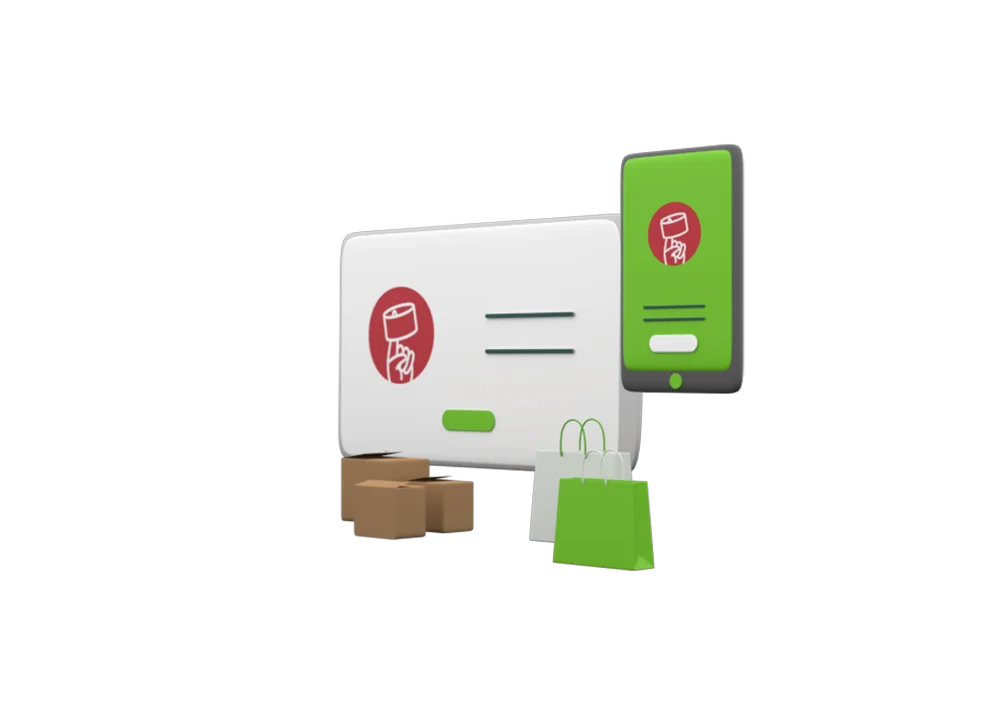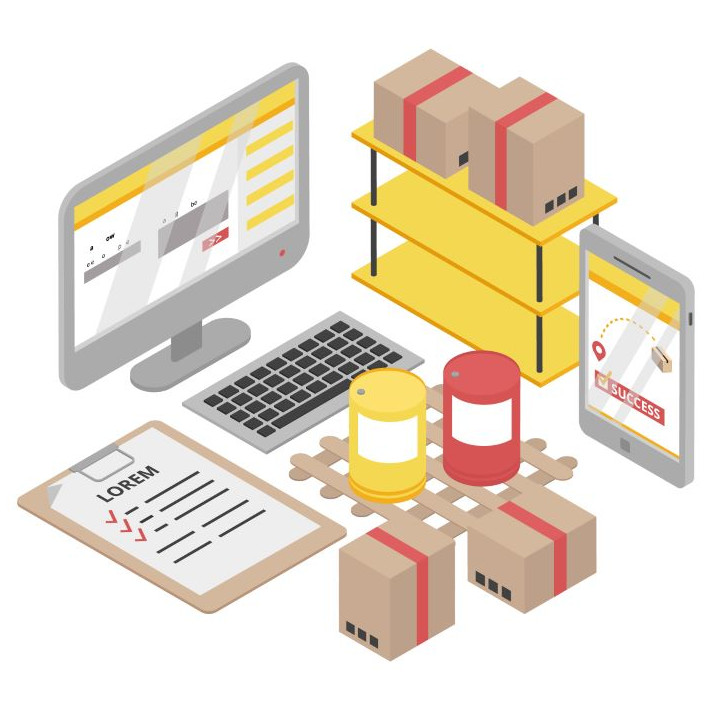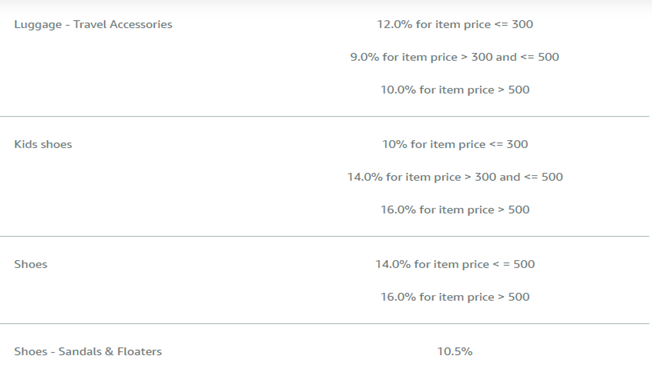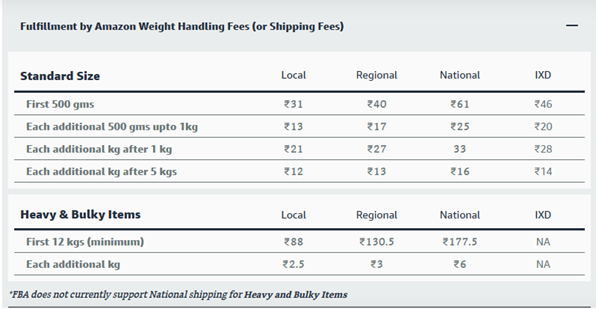Inventory and Fulfillment Models on the Amazon India Marketplace Explained

According to stats, 43 percent of small businesses don’t track inventory, or do so using a manual system.
To mitigate this in the fast-paced world of e-commerce, inventory and fulfillment need to be automated to enhance their effectiveness. Streamlining their inventory and fulfillment models plays a crucial role in the success of sellers on the Amazon India marketplace.
Understanding the various inventory and fulfillment models available becomes essential for sellers, whether they are beginners or advanced merchants. This blog will delve into the intricacies of these models, their significance, and how they operate on the Amazon India platform.

Manage inventory the right way with Ginesys OMS integrated with Amazon
 The Significance of Inventory and Fulfillment Models on Amazon India
The Significance of Inventory and Fulfillment Models on Amazon India
Efficient inventory management and effective order fulfillment processes are vital for success on the Amazon India marketplace. Whether you are a beginner or an advanced seller, understanding and implementing the right inventory and fulfillment models will significantly impact your business. Amazon in India offers three inventory management and fulfilment solutions for the majority of sellers. Each has a different cost structure and integration requirements. The benefits also vary, making it essential for you to go through the pros and cons of each option before making a decision.
Significance for Both New and Advanced Sellers
Inventory and fulfillment models are equally significant for both beginner and advanced sellers on the Amazon India marketplace. Let's take a closer look at their importance for each category:
New Sellers on Amazon India
For those starting their journey on the Amazon India marketplace, understanding and implementing the right inventory and fulfillment models are crucial for building a strong foundation. By selecting the appropriate models, beginner sellers can ensure that they have control over their inventory, fulfill orders efficiently and provide a positive customer experience right at the outset. This helps in establishing their brand, gaining customer trust, and laying the groundwork for future growth.
Advanced Sellers on Amazon India
Advanced sellers, who have already established their presence on the Amazon India marketplace, need to continually optimize their inventory and fulfillment strategies. As sales volume increases, the complexity of managing inventory and fulfilling orders also grows. By leveraging advanced inventory management systems and utilizing scalable fulfillment models, they can streamline their operations, handle higher order volumes, and expand their business without compromising on customer satisfaction.
Understanding Fulfillment Models
Efficient inventory management and effective order fulfillment processes are vital for success on the Amazon India marketplace. Whether you are a beginner or an advanced seller, understanding and implementing the right inventory and fulfillment models can significantly impact your business. Fulfillment models play a crucial role in the order fulfillment process on the Amazon India marketplace. Let's explore two key fulfillment models available to sellers:
EasyShip
EasyShip is a fulfillment model offered by Amazon India that provides end-to-end logistics support to sellers. Under this model, sellers store their inventory in Amazon's fulfillment centers, and Amazon takes care of the packaging, shipping, and delivery processes. Easy Ship simplifies logistics for sellers, allowing them to focus on other aspects of their business. It is particularly beneficial for sellers who want to leverage Amazon's infrastructure and ensure fast and reliable delivery to customers.
Shipping out orders for Amazon EasyShip
Shipping out orders through Amazon EasyShip is easy. Once an order has been marked as ready to ship on Amazon seller portal, you just need to schedule a pickup and it gets picked up and delivered by the Amazon logistics network.

Streamline inventory management with India’s leading Order Management Software
Advantages of Amazon EasyShip
Here are the key benefits of Amazon EasyShip:
- Sellers don’t have to negotiate with multiple vendors/aggregators
- Easy to setup and easy to track
- Vast coverage
- Option to manage returns and better customer service through Amazon itself
Disadvantages of Amazon EasyShip
- Having a single courier partner leads to less flexibility
- Shipping through Amazon could be more expensive compared to other platforms
- Cash on Delivery (COD) is enabled by default as a payment option and can’t be turned off
- Slower remittance cycles
- Products are not covered by insurance
- You don’t get Prime badges for your listings
Merchant Fulfilled Network (MFN) / Self Ship
The Merchant Fulfilled Network (MFN), also known as the SelfShip model, is another fulfillment option available on the Amazon India marketplace. With this model, sellers manage the entire fulfillment process on their own, including inventory storage, packaging, and shipping. Sellers are responsible for ensuring timely delivery and providing excellent customer service. SelfShip provides sellers with more control over their operations and allows for personalized branding and customer experience.

How MFN Works on Amazon India
When a customer places an order for a product fulfilled through MFN, the seller receives a notification. The seller then prepares the order for shipping, generates the shipping label, and arranges for the pickup of the package by a courier partner. Once the product is shipped, the seller updates the tracking information on Amazon. Here’s how the MFN or Self Ship model operates on the Amazon India marketplace:
- Inventory Management: Sellers who choose the SelfShip model are responsible for storing their inventory in their own warehouses or storage facilities. They must accurately manage stock levels, ensure product availability, and update listings on the Amazon marketplace.
- Order Processing: When a customer places an order for a product fulfilled through the Self Ship model, the seller receives a notification through Amazon's Seller Central. It then becomes the seller's responsibility to pick, pack, and prepare the order for shipment.
- Shipping and Delivery: Sellers using the SelfShip model arrange for shipping the package using their preferred courier or logistics service. They generate shipping labels, track the package, and ensure it reaches the customer within the specified timeframe.
- Customer Service: Throughout the fulfillment process, sellers are accountable for providing excellent customer service. This includes promptly responding to customer inquiries, resolving any issues that may arise, and ensuring a positive post-purchase experience.
Using the Merchant Fulfilled Network (MFN) or Self Ship model gives sellers more control over their fulfillment operations.
Shipping out orders for Amazon SelfShip with Ginesys OMS
Even though SelfShip might seem a tedious option as the merchant has to manage all logistics aspects, with Ginesys OMS, this option is simplified. Once an order has been marked as ready to ship on Ginesys OMS (Browntape), you can schedule a pickup and it gets picked up and delivered by any courier partner of your choice. Browntape integrates with 30+ courier services and logistics aggregators. Once you’ve marked as ready to ship, your partner of choice for the particular region will be informed and will be ready to pickup the goods once you schedule a pickup.
Advantages of Amazon SelfShip
Here are the key advantages of Amazon SelfShip:
- You get to choose your logistics partners based on their regions, rates and their reliability
- You can choose between packing using Amazon’s packaging materials or your own materials
- You can avoid the high costs that Amazon shipping charges
- You can give customers the choice to pay by Cash On Delivery (COD) based on their preference
Disadvantages of Amazon SelfShip
The key disadvantages of Amazon SelfShip are:
- The need to negotiate with various shipping partners
- The availability of the Prime badge only by invitation based on performance
- The need to manage customer communications and customer service on your own

Revolutionize the way you manage the orders, inventory and fulfillment processes.
Fulfillment by Amazon (FBA)
 Fulfillment by Amazon (FBA) is a comprehensive fulfillment service provided by Amazon. It allows sellers to store their products in Amazon's fulfillment centers, and Amazon takes care of the entire fulfillment process, including picking, packing, shipping, and customer service. When an order is placed, Amazon handles the logistics, ensuring timely delivery to the customer. This model enables sellers to focus on other aspects of their business, such as product sourcing, marketing, and expansion.
Fulfillment by Amazon (FBA) is a comprehensive fulfillment service provided by Amazon. It allows sellers to store their products in Amazon's fulfillment centers, and Amazon takes care of the entire fulfillment process, including picking, packing, shipping, and customer service. When an order is placed, Amazon handles the logistics, ensuring timely delivery to the customer. This model enables sellers to focus on other aspects of their business, such as product sourcing, marketing, and expansion.
Benefits of Using FBA on Amazon India
Fulfillment by Amazon (FBA) provides numerous benefits and features for sellers on the Amazon India marketplace:
- Global Reach: FBA allows sellers to expand their customer base beyond the domestic market by leveraging Amazon's extensive global fulfillment network. Sellers can reach customers in different countries without the hassle of managing international logistics.
- Prime Eligibility: Products fulfilled by Amazon through FBA are eligible for Amazon Prime, a premium subscription service that offers fast and free shipping to millions of Prime members. This increases visibility and attracts more potential customers to the seller's products.
- Efficient Inventory Management: With FBA, sellers can store their inventory in Amazon's fulfillment centers, relieving them of the burden of managing their own warehouses. Amazon takes care of inventory storage, ensuring products are readily available for quick order fulfillment.
- Customer Service: Amazon's renowned customer service handles inquiries, returns, and refunds on behalf of sellers using FBA. This enhances the overall customer experience, leading to higher customer satisfaction and repeat purchases.
- Multi-Channel Fulfillment: FBA enables sellers to fulfill orders not only from the Amazon marketplace but also from other sales channels. This means sellers can use FBA to fulfill orders from their own websites or other e-commerce platforms, streamlining their operations.

Improve your inventory accuracy, optimize order fulfillment, increase sales and enhance customer service and efficiency.
Steps to Set Up and Use FBA
 Setting up and using FBA on Amazon India involves the following steps:
Setting up and using FBA on Amazon India involves the following steps:
- Create an Amazon Seller Account: If you haven't already, create a seller account on Amazon India.
- Product Selection: Choose the products you want to sell and ensure they meet Amazon's guidelines and policies.
- Enable FBA: Within your seller account, enable the FBA feature and follow the instructions to set up your FBA account.
- Prepare and Ship Inventory: Prepare your products for shipment to Amazon's fulfillment centers. Follow Amazon's packaging and labeling requirements to ensure smooth processing.
- Ship Inventory to Amazon: Create a shipping plan, print shipping labels, and send your inventory to the designated Amazon fulfillment center.
- Monitor Inventory and Sales: Keep track of your inventory levels and sales performance using Amazon's seller dashboard. This helps you make informed decisions regarding restocking and inventory management.
- Customer Orders and Fulfillment: When a customer places an order, Amazon takes care of picking, packing, and shipping the product. You can monitor order status and customer feedback through your seller account.
Syncing with Amazon for SellerFlex Fulfilment
The SellerFlex model of fulfilment is kind of an extension of the FBA model. It lets you set aside a certain quantity of goods in your own warehouse for the Amazon channel. You need to manage the warehouse on your own and ship products using a logistics partner of your choice. Amazon provides you with an order management system that lets you manage the inventory efficiently. This is a special invite-only program.
Advantages of Amazon FBA
- You get access to the Prime badge
- If you’re competing with other sellers for the same product, you get a preferential buy-box display
- You don’t have to coordinate with multiple logistics partners
- There is no need to manage your warehouse
- Amazon takes care of the returns and customer service
Disadvantages of Amazon FBA
- Increased complexity of warehouse management for multichannel sellers
- Minimum order quantity demanded by Amazon to setup FBA
- Higher fees for storage, packing and fulfilment
- You will have to bear the cost of the products that are sent to the Amazon warehouse, further reducing your margins
Pricing Components of Various Models
Different fulfillment models such as EasyShip, SelfShip (MFN), and FBA, have distinct pricing structures and associated advantages and disadvantages. Here's a comparison of the various types of fees:

EasyShip: This model provides cost-effective shipping options for sellers. However, it requires them to manage logistics on their own, which can be time-consuming and challenging. Amazon logistics is the only shipping partner available under EasyShip. When your products are listed on Amazon and go live, you can connect to the inventory either from Ginesys or from other ERPs to Amazon through Browntape (Ginesys OMS). Once connected, the inventory for these items gets automatically synced to Amazon.
Once you receive your order from Amazon, it gets synced automatically with Browntape and then with Ginesys ERP. Through Ginesys OMS, your inventory will be reduced on the Amazon platform and other platforms.
Referral Fees





SelfShip (MFN): SelfShip offers more control over fulfillment operations but requires sellers to handle all aspects of logistics, including packaging and shipping. This model can be suitable for sellers with lower order volumes or specific branding requirements

Weight Handling Fees

FBA: While FBA involves fees for storage and fulfillment, it provides sellers with a comprehensive fulfillment solution, saving them time, effort, and resources. The advantages include access to Prime customers, global reach, and reliable customer service.

You will also not incur any additional storage costs for inventory apart from your own costs.
*Categories with FBA Closing fee ₹12 for Price range ₹0-250
**Categories with FBA Closing fee ₹12 for Price range ₹251-500
Choosing the right fulfillment model depends on factors such as the seller's business size, order volume, operational capabilities, and growth objectives.

Operational Differences of Various Models
 Each fulfillment model has different modes of operation. Here is how they function:
Each fulfillment model has different modes of operation. Here is how they function:
EasyShip: Sellers using Easy Ship have their products stored in their own warehouses. Amazon takes care of shipping and customer service. This model offers a streamlined and standardized fulfillment process, ensuring consistent quality across orders.
SelfShip (MFN): With SelfShip, sellers manage the entire fulfillment process, from inventory storage to packaging and shipping. While this grants more control, it also requires dedicated resources and infrastructure to handle logistics effectively.
FBA: FBA outsources fulfillment entirely to Amazon. Sellers leverage Amazon's logistics infrastructure and benefit from their expertise in handling shipments, ensuring efficient and reliable delivery.
Ginesys OMS- The Ideal Solution for Easy Ship and Self Ship Models
Ginesys OMS is a powerful Order Management System that provides robust solutions for multichannel order and inventory management in the Indian e-commerce landscape. With its seamless integration with Amazon and a wide range of features, Ginesys OMS is an ideal solution for sellers using the EasyShip and SelfShip models. Let’s explore the benefits of Ginesys OMS and its integration with Amazon.

Your comprehensive solution for multichannel order and inventory management
Understanding Ginesys OMS
Ginesys OMS is an advanced software solution that enables businesses to efficiently manage their orders, inventory, and fulfillment across multiple channels. It provides a centralized platform where sellers can streamline their operations, track orders, manage inventory, and handle customer communications effectively.
Ginesys OMS Integration with Amazon
One of the key strengths of Ginesys OMS is its seamless integration with the Amazon marketplace. This integration allows sellers to sync their Amazon orders, inventory, and product information directly with Ginesys OMS. With real-time data synchronization, sellers can effortlessly manage their Amazon operations from within the Ginesys OMS interface, saving time and reducing manual effort.
Suitability of Ginesys OMS for Easy Ship Model
The EasyShip model on Amazon offers sellers the convenience of having their products stored in Amazon's fulfillment centers. Ginesys OMS enhances this model by providing automated order routing, label generation, and tracking updates. With Ginesys OMS, sellers can easily manage their Easy Ship orders, ensuring accurate and timely fulfillment. The system also offers insights into shipping costs, allowing sellers to optimize their shipping strategies and minimize expenses.
Suitability of Ginesys OMS for Self Ship Model
The Self Ship model, also known as Merchant Fulfilled Network (MFN), gives sellers complete control over their fulfillment process. Ginesys OMS empowers sellers in this model by providing advanced order management capabilities. Sellers can efficiently process and fulfill self-ship orders, print shipping labels, and track shipments within the Ginesys OMS platform. Additionally, the system offers inventory management features, enabling sellers to maintain accurate stock levels and prevent overselling.
Ginesys OMS and Amazon Integration
Ginesys OMS offers a comprehensive solution for multichannel order and inventory management. Its seamless integration with Amazon simplifies the selling process and enhances operational efficiency. Whether sellers opt for the Easy Ship model or the Self Ship model, Ginesys OMS provides the necessary tools and functionalities to streamline their operations, improve order fulfillment, and deliver a seamless customer experience.
Ginesys OMS emerges as a robust and reliable Order Management System offering comprehensive solutions for multichannel order and inventory management. Its seamless integration with the Amazon India marketplace makes it a valuable asset for sellers using the EasyShip and SelfShip models.
Ginesys OMS integrates with Amazon for the following updates of the orders, inventory and payments:
- Listing Fetch
- Inventory Sync
- Order Fetch
- Order Processing
- Order Updates
- Price Updates
- Payment Sync
Ready to take your order and inventory management to the next level? Experience the power of Ginesys OMS today. Schedule a demo or connect with our experts.